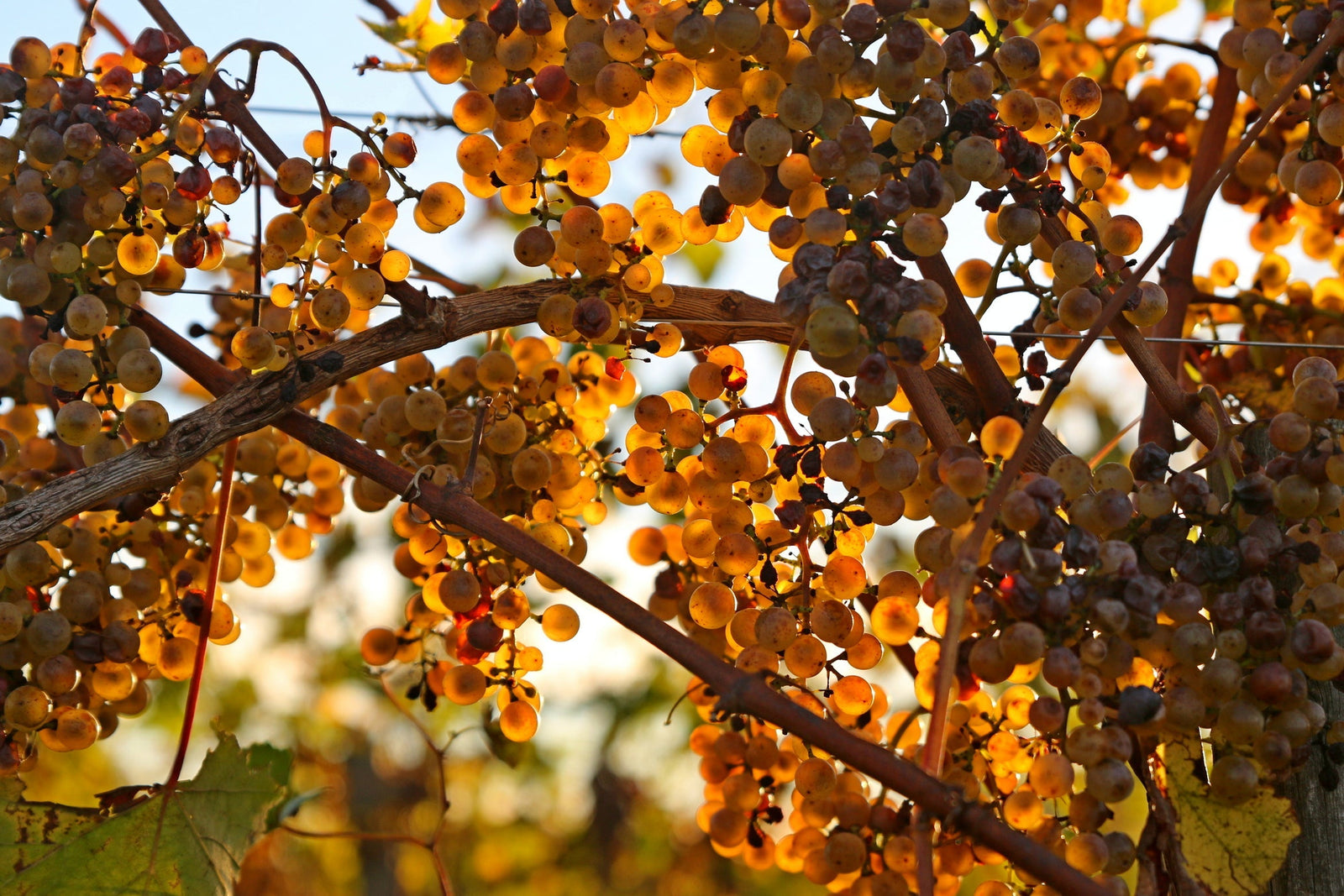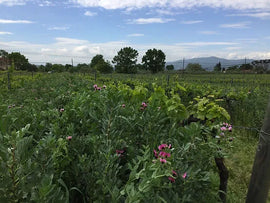While most are familiar with Bordeaux or the Armagnac made in the Gascogne region, not as many are aware of the wines of this corner of France. The Sud Ouest is nestled between the Atlantic Ocean, the Pyrenees and Massif Central mountain ranges reaching down to the French Basque Country in the southwest corner. For centuries, wine traveled up and down the rivers and roads dotted with abbeys and monasteries that tended vineyards. Pilgrims traveled through the region along the Camino Frances route to the holy city of Santiago de Compostela in Galicia, which was consecrated in 1189. The region has had its ups and downs, but in the last few decades has become a treasure trove of well-priced high-quality wine. This month we will look at two areas in the region that display the wide diversity of styles and culture within this corner of France.
Cahors is an area with a long turbulent history, alternating between times of great prosperity and intense social upheaval in equal measure. With its warm dry weather, influence from both the Mediterranean and Atlantic, and limestone plateaus, the region has been known since Roman times for producing dark, powerful wines from Malbec, known here as Auxerrois or Côt. Its vineyards were first uprooted and set ablaze by the Emperor Domitian in 92 CE, after complaints from growers in the Italian Peninsula that the love for the wine of the region was unfair competition, leading to a ban on viticulture that was not lifted until 276 CE. Unfortunately, the fall of the Roman Empire put a stop to the revitalization, and the region's fortune remained rocky until 630 when Saint Didier, then Bishop of Cahors, began the work of refocusing on winemaking in the region. Their fortunes turned once again when Henry the 2nd married Eleanor of Aquitaine, and the “black wine of Lot” was served at their wedding in 1152, and these dark, powerful wines were once again fashionable. Unfortunately, the region was plunged into chaos with the beginning of the Hundred-Years’ War and the area was ravaged; vines and fruit trees were cut down and wine vats were destroyed. In the 1370s, the Bordelaise imposed a higher tax rate and restrictions on the area, slowly relegating it as a source of Malbec to beef up the lighter Bordeaux wines. After the region was devastated in quick succession by Phylloxera, mildew, and black rot accidently brought over on American vines, farmers replanted with hybrid varieties focused on mass production over quality. Plans to revitalize the region were in the works, but the start of World War 2 stalled those plans, and a frost in 1956 killed off almost all the last remaining vineyards, shrinking down to under 5,000 hectares from their post-phylloxera peak of 80,000. In hindsight, this was a boon for the region, as it gave growers the opportunity to replant with a focus on quality, with mostly Malbec and a smaller portion of Merlot and Tannat replacing the hybrids that had been planted in the 19th century. AOC status was gained in 1971, but as a final blow in the modern age, Argentina became synonymous with Malbec only a few years later with its plush and richer take on Malbec. Despite this, the region has persevered, continuing to create distinct brooding wines, which while not as exuberant as their South American compatriots, carry an earthy edge that creates beautifully long-lived and food friendly-wines.
Nestled in the foothills of the Pyrenees, with its cool and wet Atlantic influences and a wide array of soils and vines planted along rolling hills, Jurançon has been renowned for its sweet wines for centuries and was one of the first appellations to receive AOC status in the 1930s. While wine has been made in the region since Roman times, this early style was a far cry from what would come later, as most white wine of that time was closer to the amber wines of Georgia than anything we would think of as white wine. While the earliest mention of winemaking can be dated back to 998 near the Abbey of St. Vincent in Lucq-du-Béarn, the region, did not become known for viticulture until the 14th century, when Petit Manseng and Gros Manseng were widely planted in the area after a wave of immigration from Spain and larger France. These thick-skinned, high-sugar and acid grapes thrived in the wet, humid environment, with the thick skins helping protect the grapes from rotting, which allows them to spend more time on the vine, reaching full ripeness while still holding on to their acidity. The sweet wines of this region became so famous that by 1550 Henry the 2nd of Navarre purchased land in the region for the purpose of winemaking and by the 18th century the wines were exported to Northern Europe and the new world, competing with Sauternes as France's best sweet wine. Phylloxera almost brought Gros Manseng to the brink of extinction as the grape didn’t take to grafting onto American rootstock. It was only saved by a few stubborn growers who refused to let it die, reinventing the grape as a dry wine. The region has been undergoing a rejuvenation, with younger winemakers focusing on the powerful dry wines that can be made from its native varieties.
Sante!
Justin Malesheetz - Wine Buyer, Fillmore
|
2020 Charles Hours Jurançon Sec “Cuvee Marie” |
|
|
Region / Country of Origin: Jurancon, France |
About the Winery: Clos Uroulat, an estate dating back to 1775, was purchased by Charles Hours in 1983. Charles runs the estate with his daughter Marie, who is committed to continuing the family legacy while infusing modern creativity into the ancestral art of winemaking. The estate has been farmed sustainably without insecticides or pesticides, and aligns with the region's strong belief in polyculture, with trees lining the vineyards with alternating rows of tilled soil and natural grass in between the vines, alternating every year. About the Winemaking: Gros Manseng and Petit Courbu, a grape typically used for blending in the Southwest, which gives a floral honeyed character while having less acidity than the Mansengs. The grapes are picked by hand over several passes during the harvest season to guarantee ideal ripeness for each style, with the dry wines being picked earlier to keep them from being too full-bodied. These grapes are then immediately put into a pneumatic press, avoiding skin contact as much as possible. The wine is then chilled and moved to stainless steel tanks to ferment for 20 days before being placed in 225-liter barriques, 5-10% of which are new, for 10 months, after which it is filtered and bottled. Tasting Notes: Pale gold in the glass with a nose of pineapple, honeyed fruit, lemon marmalade, elderflower, and wet stone. Laser-like acidity with a lush full body and flavors of citrus finish and a roundness that ends in a dry stony finish. |
|
Winemaker: Charles and Marie Hours |
|
|
Price: $26.99 per bottle/ $291.49 per case |
|
|
Suggested Food Pairing: cold cuts, chilled seafood, Mexican chicken salad with jalapenos and carrots, grilled chicken thighs with a citrus glaze |
|
|
2022 Château du Cèdre Cahors du Cèdre |
|
|
Region / Country of Origin: Cahors, France |
About the Winery: Located an hour and a half east of Bordeaux, Château du Cèdre was founded in the 1950s by Belgian immigrant Léon Verhaeghe. He was succeeded by his son Charles in the 1970s, who pioneered a return to quality during this time of mass-produced wine, planting vines on the poor stony soils, forcing the vines to struggle and creating smaller, more concentrated berries. He was succeeded in 1988 by his sons Pascal and Jean-Marc, who continued the quest for quality, removing the use of chemicals starting in 1992, fully banning their use by 2000 and gaining organic certification in 2012. The baton has now been passed on to the fourth generation with Pascal's sons Jules and Robin joining the family business. About the Winemaking: 90% Malbec with 5% each of Tannat and Merlot are manually harvested and sorted in the vineyards. Macerated for 30 days with daily punching down of the skin cap at the beginning of fermentation to help extract more flavor compounds, tannins, and colors from the solids of the grape, while also preventing the cap from drying out. Fermentation temperature does not exceed 28° C, and malolactic fermentation is carried out in oak barrels. The wine is aged for 20–22 months in a combination of new, as well as first and second use oak barrels. Bottled unfined and unfiltered. Tasting Notes: Medium purple with a perfumed nose of potpourri, blackberry preserves, blood orange, fresh blueberries, and potting soil. Dry with fine-grained tannins and bright acidity frame flavors of fresh dark berries and black plum, with a long finish reminiscent of violets, and blackberries. |
|
Winemaker: Jules Verhaeghe |
|
|
Price: $26.99 per bottle/ $291.49 per case |
|
|
Suggested Food Pairings: Grilled pork chops, suadero, lamb or goat barbacoa, Chile Colorado with nopales |
|





